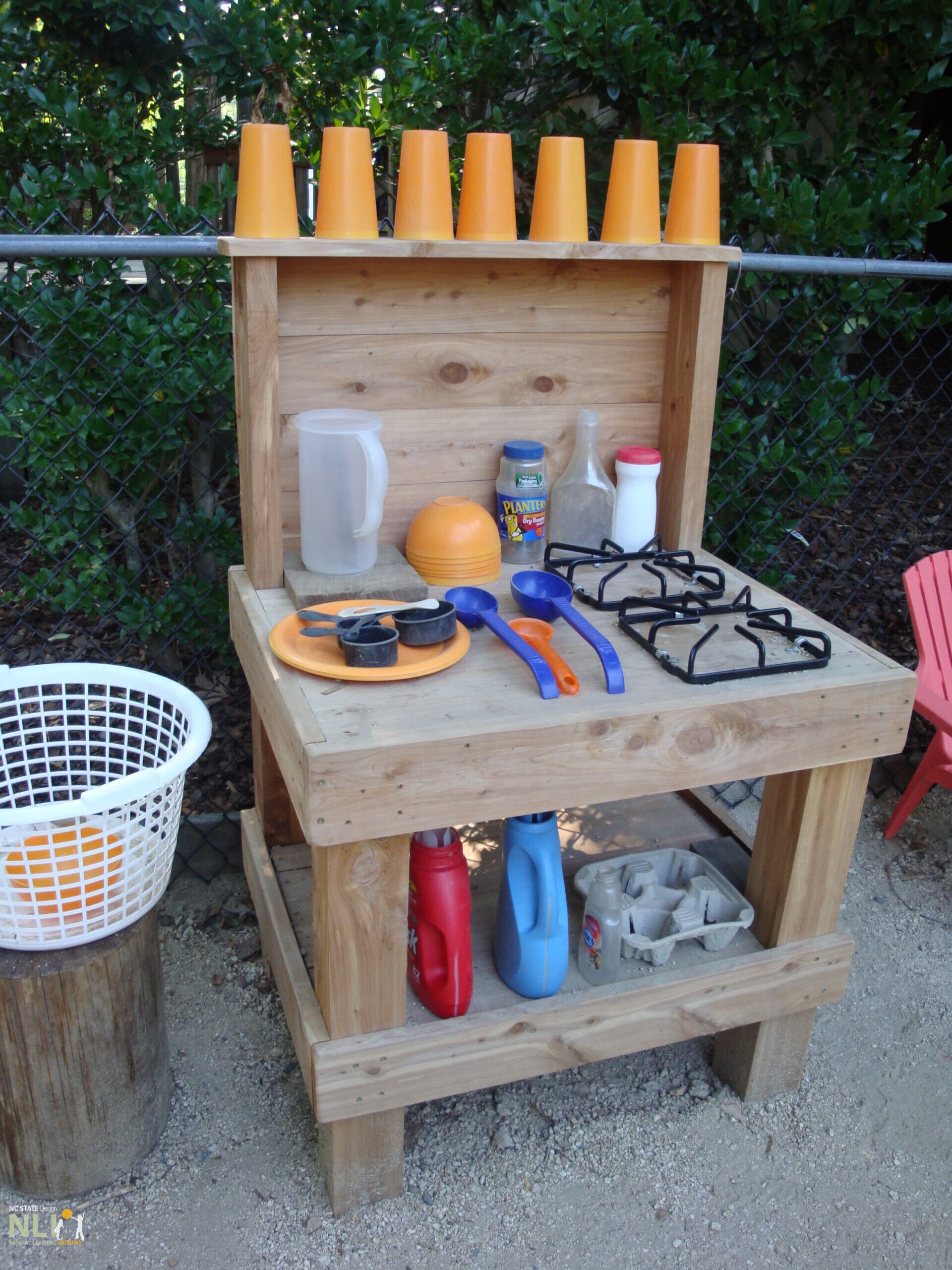Fairy Soup Kitchen
Fairy soup kitchens encourage outdoor dramatic play, aimed at increasing children’s creative expression and imagination. Creating a fairy soup kitchen represents a unique form of helping expand children’s mathematics and sciences knowledge and skills through measurement, counting, and experimentation. In addition, this activity provides an area to stimulate their cognitive development, sensory knowledge, and the natural world around them.
Setting:
Outdoor Learning Environment
Focus:
Activity focused on stimulating senses and learning more about the natural and physical world around them.
Curricular Areas:
- Problem-Solving
- Decision-Making
- Cognitive Development
- Sensory Stimulation
- Mathematics Knowledge and Skills: counting, sorting, matching, patterns, comparing
- Physical Development: Fine Motor Skills
- Scientific Learning
- Approaches to Learning: Imagination, Creativity, Invention, Aesthetic Sensibility
Suggestions:
- Introduce children to the new activity setting in the OLE and read Penelope Jane: A Fairy’s Tale by Rosanne Cash and G. Brian
- In the outdoor learning environment, designate an area to create a fairy soup kitchen for children to play in.
- On a table add materials, encouraging children to create fairy soup. Encourage children to be creative by utilizing materials placed on the table. This is beneficial in promoting unstructured science learning and many learning components such as hand-eye coordination, physical development (gross and fine motor skills).
- Invite them to collect flowers from the garden and surrounding OLE. In addition, allow them to collect elements of the OLE to include in the fairy soup.
- Use prompt questions to magnify their creativity and critical thinking skills (being careful not to persuade or influence independent learning opportunities). What will you include in your fairy soup? What natural item could we substitute for real food?
- Expand to include additional activities and/or curriculum that enhances learning opportunities for children.
Engaging Parents:
- Encourage children to draw a picture and share stories of the fairy soup kitchen with their family.
- Encourage parents to create this inexpensive activity at home with their children.
Materials & Tools
- Outdoor table
- Large pots
- Plastic soup bowls or containers
- Spoons and ladles
- Polished stones, flowers from the garden, seashells, and other natural materials
- Pitchers
- Water
- Glitter (optional)
Book Recommendations:
- “Alice the Fairy” by Dave Shannon
- “Olivia and the Fairy Princesses” by Ian Falconer
- “Pinch and Dash Make Soup” by Michael J. Daley and Thomas F. Yezerski
- “Soup Day” by Melissa Iwai
*Appropriate clothing is necessary for this activity as children’s will potentially get dirty or wet.


